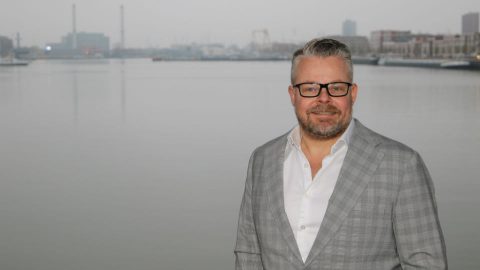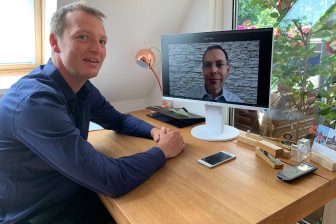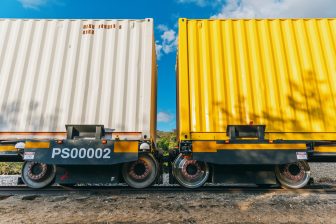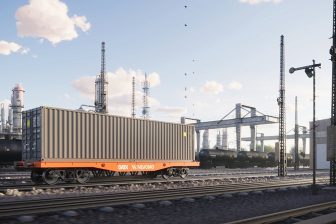
“We have been a digital forwarder since 2006”
The term ‘digital forwarder’ is now frequently used by new start-ups. But it is nothing new, says Dennis de Roo. Together with Ron de Roo, Sander de Roo and Bastiaan Kraan, he manages Van Donge & De Roo Shipping & Forwarding in Rotterdam. The family firm has been around since 1977. “And we have been a digital forwarder since 2006.”
Since 2006, customers have been able to log into the customer portal to track their shipments in real time, or to import them automatically into their own systems. “Moreover, forwarding is about more than just price comparison and booking cargo”, de Roo explains.
Added value
“Nowadays, you should also be able to automatically make a CO2 report of all shipments, for example. Our customers have been able to follow everything and see real-time prices for a long time.
Spot can be nice if you run out of space, but the price is often very high. As a forwarder, we offer added value because you can follow everything, get the best prices for a longer period of time and you can link to your own systems so that your people no longer have to retype all information. ”
Transparency
Van Donge & De Roo nowadays also links with shipping companies and almost all inland terminals. “They automatically shoot the information into our system when a container arrives or leaves. We now also have a connection with eCMR. As soon as a container arrives at a warehouse, we will be notified. So we can always see if a container arrived on time, was unloaded on time and how long it took them.
“Due to all available data, the working method of freight forwarders has become increasingly transparent. “After all, once we have the information, the customer can also see it immediately. We provide openness in everything. The customer can immediately witness the quality of our services, because the entire status trend is visible. But even if the customer does not respond in time, for example, for the bill of load or ship’s declaration, this is visible. This gives you good insights to improve the process. ”
Empty runs
Van Donge & De Roo processes more than 630,000 containers on an annual basis. “60 per cent of that is import. This means that containers often go back empty. That chain is thus not yet optimal. With digitisation we can make that process more efficient and combine it with export flows. Digitisation never stops. This means we can process much more cargo with fewer people. We handle those 630,000 containers with 120 employees. That is thanks to digitisation. ”
Volume is important to further optimise the supply chains. The family company now has around 40 trains a week running to the hinterland via our subsidiary DistriRail. “They must be filled. If our load factor is below 80 per cent, we suffer a loss on a shipment. There are track and trace units on board, so that the customer can follow his stuff. By the way, we also work for other forwarders and operators in the chain. ”
Better and cheaper
With traditional activities, such as container storage, digitisation is increasingly being used to optimise the process. “For example, if a truck driver arrives at our depots in Rotterdam or Antwerp, we scan his hand or cargo card and then enter his booking number. He automatically gets the stack location and may access to load or unload the container at the right place.
Because of this method, our forklift trucks do not have to drive up and down. In short: our services are becoming better, more insightful and cheaper due to digitisation. “




